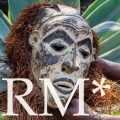Over thirty years ago, American sculptor Jimmie Durham wrote a brief, scathingly ironic paper titled “A Friend of Mine Said that Art is a European Invention.”
In it, he explored the concept of art and its cultural roots, arguing that what has traditionally been considered ‘art’ [in the West] has been heavily shaped by European history, philosophy, and aesthetics.
He suggests that this definition excludes other cultural expressions and practices that might not fit within the European framework but are still valid forms of creativity and expression.
In fact, conversations around restitution and repatriation today still perpetuate this dismissal of non-European cultural goods.
Compare, for example, the concerted international response to recovering Nazi-looted artworks (of European origin) compared to the protracted struggle to restitute the Benin Bronzes to Nigeria.
Durham moved to broaden this definition, advocating for a more inclusive understanding of what art is.
He suggests that by recognising the diverse ways different cultures create and appreciate art, we can move beyond a narrow, Eurocentric definition.


